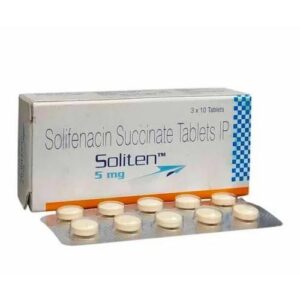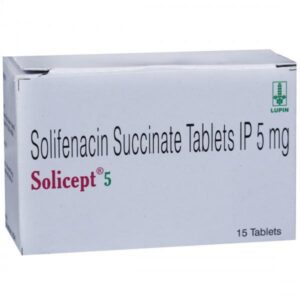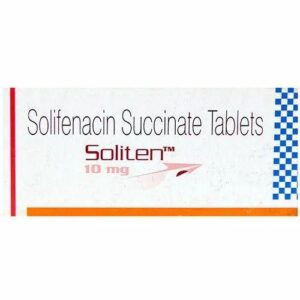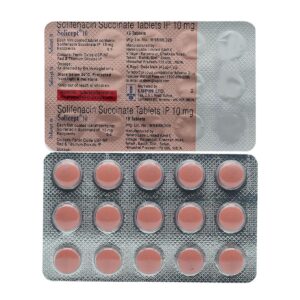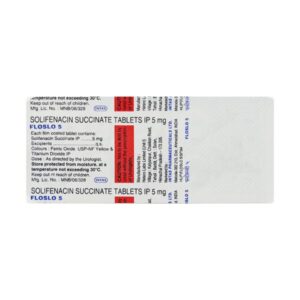SOLIFENACIN
SOLIFENACIN: Solifenacin is a medication used primarily for the treatment of an overactive bladder. It belongs to a class of drugs called antimuscarinics or anticholinergics.
The mechanism of action of solifenacin involves blocking the action of acetylcholine, a neurotransmitter responsible for stimulating the bladder muscles. By inhibiting the activation of these muscles, solifenacin helps to decrease the frequency and urgency of urination seen in individuals with an overactive bladder. It also helps to reduce involuntary contractions that can lead to urinary incontinence.
The recommended starting dose of solifenacin is 5 mg once daily. However, depending on the individual’s response, the dose can be adjusted to a maximum of 10 mg once daily. It is important to follow the prescribed dosage and consult a healthcare professional if any changes are needed.
Common side effects of solifenacin may include dry mouth, constipation, blurred vision, difficulty urinating, and dry eyes. These side effects are generally mild and improve over time. It is important to inform a healthcare professional if any side effects become severe or persist.
People with specific medical conditions, such as narrow-angle glaucoma, severe kidney or liver problems, or obstructive gastrointestinal disorders, should use solifenacin with caution or may not be able to take it at all. It is important to provide a comprehensive medical history to a healthcare professional before starting solifenacin.
In conclusion, solifenacin is a medication used for the treatment of overactive bladder. It works by blocking the action of acetylcholine, reducing bladder muscle contractions. The recommended starting dose is 5 mg once daily, which can be adjusted to a maximum of 10 mg once daily. Common side effects include dry mouth, constipation, and blurred vision. It is important to speak to a healthcare professional for further guidance and monitoring while taking solifenacin.

